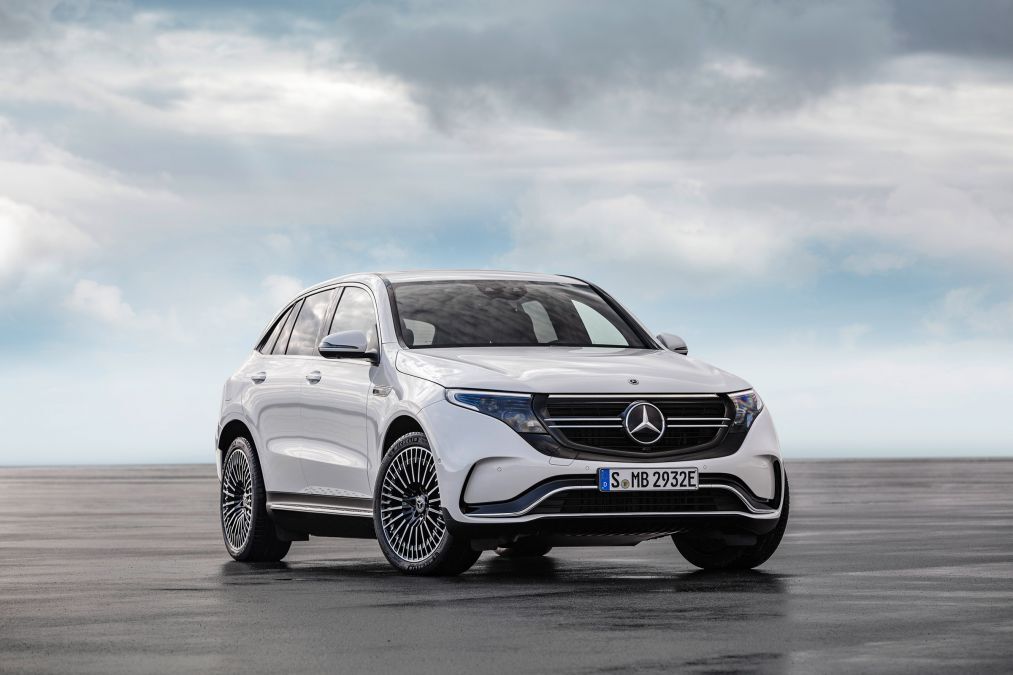Mercedes-Benz EQC: Can it take on Tesla?
Mercedes-Benz' first purpose built EV, the EQC, looks to take on the Tesla’s falcon-winged flagship, the Model X and the Jaguar I-Pace
 Mercedes-Benz' first purpose built EV, the EQC, looks to take on the Tesla’s falcon-winged flagship, the Model X and the Jaguar I-Pace
Mercedes-Benz' first purpose built EV, the EQC, looks to take on the Tesla’s falcon-winged flagship, the Model X and the Jaguar I-PaceWith the announcement that the Mercedes-Benz EQC will be available next year, the flag bearer of the segment, the Tesla Model X now finds itself in the midst of a three way shoot-out between itself, the EQC and the Jaguar I-Pace. For now. The Mercedes-Benz EQC has been announced just weeks before another German brand, Audi, is expected to announce its electric SUV – the e-Tron. Tesla had for a while been the only manufacturer with a mainstream electric-SUV but now, the attention that the segment is receiving from automotive behemoths like Mercedes-Benz and Audi will certainly make life difficult for the Model X, an SUV that is backed up by incredible performance numbers that even the new EQC can’t hold a candle to.
The EQC has rather impressive headline figures of 402bhp(identical to the Audi and 7bhp more than the I-Pace) and 765Nm of torque at practically zero rpm to propel the SUV to a 0-100kmph time of 5.1 seconds. Curiously, the upcoming Audi is also expected to have similar figures and will most likely be similarly sized. The EQC is powered by two motors, one each powering the axles and subsequently has active torque vectoring between the axles and individual wheels as well as all-wheel drive.
Although the Merc weighs in at more than 2400kg, it is expected to handle just as well as its fossil fuel counterparts as much of its weight – the 80kWh battery pack is a hefty 650kg – is concentrated close to the floor of the SUV. But we suspect the smaller and lighter Jaguar I-Pace might steal a march over the Merc when it comes to driving dynamics.
Even though the shape of the EQC is rather similar to the GLC, a lot has changed and it gives the EQC a distinct appearance. The LED headlight and the wide grille treatment do look imposing and are expected to be seen on future EQ cars. A cool design feature is the fibre optic element that runs above the three-pointed star and connects the two headlights creating an unbroken light element between the two headlights. The unbroken line treatment continues at the back and a horizontal light bar connects the taillights together. It has to be said that the Mercedes-Benz EQC looks much better proportioned than the EV SUVs we have seen in the recent past. Although it lacks the sheer drama that the Model X has – those cool falcon wing doors delayed the production of the SUV by almost two years – it more than makes up for it with design that in the very least won’t alienate future buyers.
The lack of autonomous tech is evident in the Model X’s competitors and it is by far the biggest difference in the way that these manufacturers have decided to go about developing their EV products. While Elon Musk’s Tesla has fitted the Model X with the necessary hardware to be completely autonomous in due time, the same cannot be said of the other two. Jaguar does have a partnership with Waymo and the I-Pace is being used extensively by Waymo to develop self-driving cars. But it is not certain at the moment if the tech will make it to an I-Pace anytime soon. It will be interesting to see how Audi goes about equipping the e-Tron with autonomous tech.
The EV SUV space is heating up right now and most other big manufacturers are expected to get their offerings to the market soon. Jaguar might have been the first to the party among traditional manufacturers but the rest surely seem to be catching up and with the barrage of EV launches expected in the next year, be prepared for an accelerated push towards electric. The Tesla still remains the one to beat and with the features and the tech that it provides it will certainly be an uphill task for even the most accomplished manufacturers. Whom do you have your money on?


